With cycling season already well underway, now's the time to be getting your child's beloved bike ready for lots of exciting new adventures. We're here to help you get that woom bike out of hibernation and ready to go, with tips on what you need to look out for and which parts you'll need to check over again at regular intervals during the peak cycling season.
First of all, let's talk safety. It's unlikely that your child will be able to spot potential problems and tell you about them before it's too late. And so they will be relying on you to pay due care and attention. We have no doubt that you'll be keen to keep your child's woom bike in perfect working order so you know that they will be safe whenever they're cycling. Simply check the bike over at regular intervals and have it serviced by a specialist when necessary.
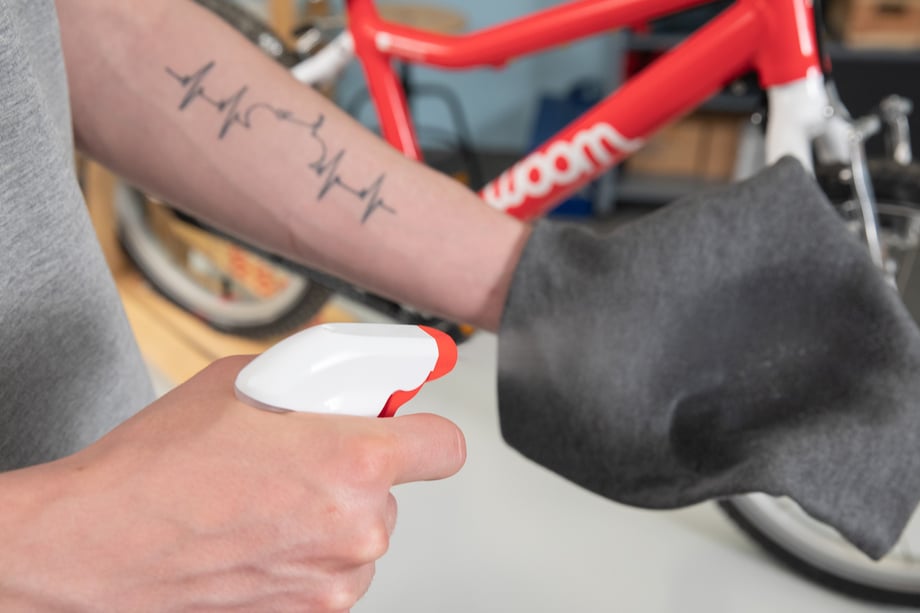
Step 1: Cleaning
The benefits of cleaning the bike first are that not only will your child have a great time riding a bike that is so clean that it sparkles, you’ll also be able to spot any potential defects more easily. Just don't use a jet wash or high-pressure hose as there is a risk of water getting in the bearings. Simply use a cloth, sponge and a little bit of mild detergent. You can also use an old toothbrush to get into the hard-to-reach areas, such as the brake pads. Rinse everything with water and dry the bike off gently with a dry cloth to really make it shine.
Step 2: Clean and oil the chain

When bikes are set aside over winter, their chains may begin to rust. But don't panic because chain oil will work wonders! Tip: Just because the weather is better during the summer does not mean that your chain needs any less maintenance – it will benefit from regular cleaning and oiling throughout the year. Plus, it will last longer this way. Wrap the chain with a dry cloth loosely held in your hand and run the chain through a few times to remove any old grease and dirt. Apply an even coating of chain oil over the chain and use a cloth to mop up any excess oil.
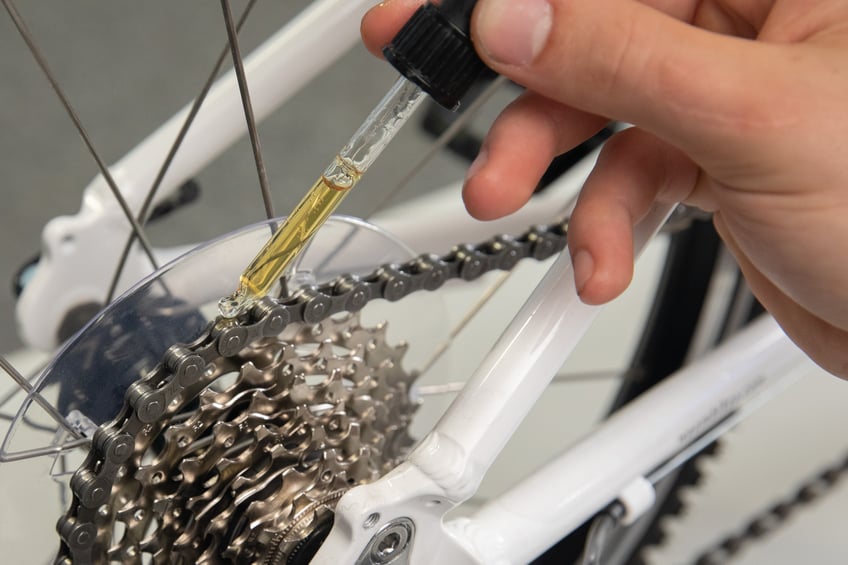
You'll find that the chain on our woom 2 and woom 3 bikes have extremely effective protection against dirt and the effects of the weather in the form of the Hebie chainguard, but you should still check every now and then to make sure that the chain isn't dirty and/or in need of oil. When it comes to topping up the chain's lubrication, you'll just need to remove the front and rear plastic parts of the chainguard. Let our technician Tim show you how it's done in this video.Then you can add just a few drops of lubricating grease from above – preferably in the lower chain strand – so they run in the gap between the Chainlooper clip and the inner part.
Step 3: Loose bolts?
Even if a bike appears to be in perfect working order, it's important to check it over at least once a month to make sure that all the bolts are securely fastened and/or that the quick-release skewers are tight enough. The following bolted connections on a bike are absolutely essential in guaranteeing a safe ride:
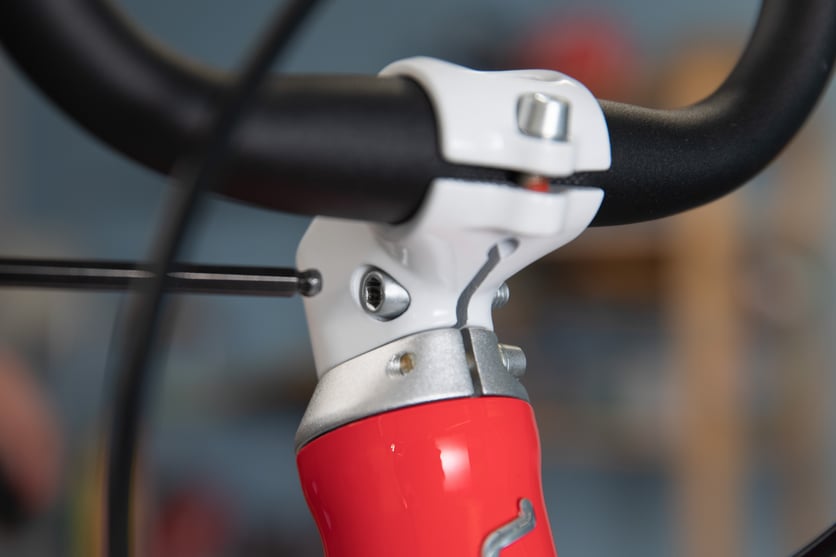
- The individual steering components (handlebars, stem and headset) must be securely connected to one another. This is taken care of in part by the clamp bolt at the bottom of the stem, which connects the handlebars and fork shaft together. If it is too loose, you may find that the front wheel stays straight when the handlebars are used to steer the bike to one side. You will also need to tighten the hexagon socket bolt on the front part of the stem (woom 1–3) or the hexagon socket bolts on the Vario clamps (woom 4–6) as required to prevent the handlebars turning around on their own axis.
Just make sure you don't tighten the hexagon socket bolts too much. Turn them slightly to start with and then tighten them up as necessary. A quarter of a turn is usually enough to do the job.

- The wheels need to be straight and secure in the frame and fork. If you are checking over one of our larger models (woom 4–6), you can easily use the quick-release skewer to ensure that the tightening torque is spot on. The quick-release lever should never be facing forwards, as this might make it easier for branches and so on to get caught. With our smaller bikes (woom 1–3), you will need a 5 mm hex key to tighten the axle bolts.
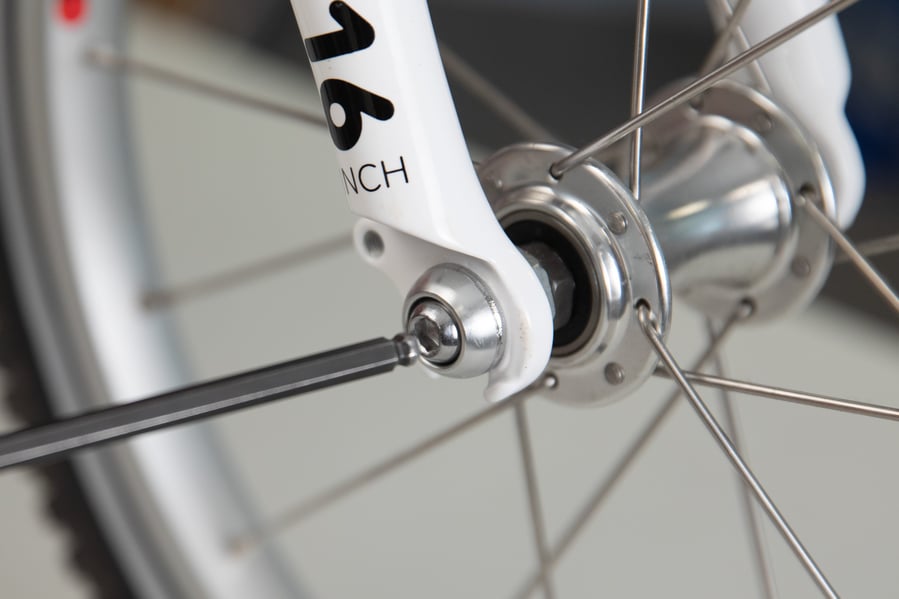

- Don't forget to check the pedals too – they may well need tightening up (after every 200 kilometres cycled at least).
- And then make sure that the seatpost clamp is nice and tight. If not, you can rectify this using a hex key (woom 1–2) or the quick-release skewer (woom 3–6). It is also worth checking the height of the saddle and raising it if your child has had a bit of a growth spurt over the winter. But only increase it by a small amount at first – after a long break from the bike, it is sensible to have the saddle at a height that allows your child to reach the ground with both feet. Once their confidence and stability are back, you can raise the saddle some more.
Plus, if the steering feels a bit stiff or the handlebars seem a little wobbly, you'll need to readjust the headset. Our mechanic Tim provides a step-by-step guide in this video.
Step 4: Check the brakes!
Be sure to check the brakes regularly to guarantee your child's safety.
- Try out the left-hand and right-hand brake levers in turn to see if you can feel any resistance
- Then you need to test the brakes further by checking that the front and rear wheels do actually come to a stop when you activate the brake levers.
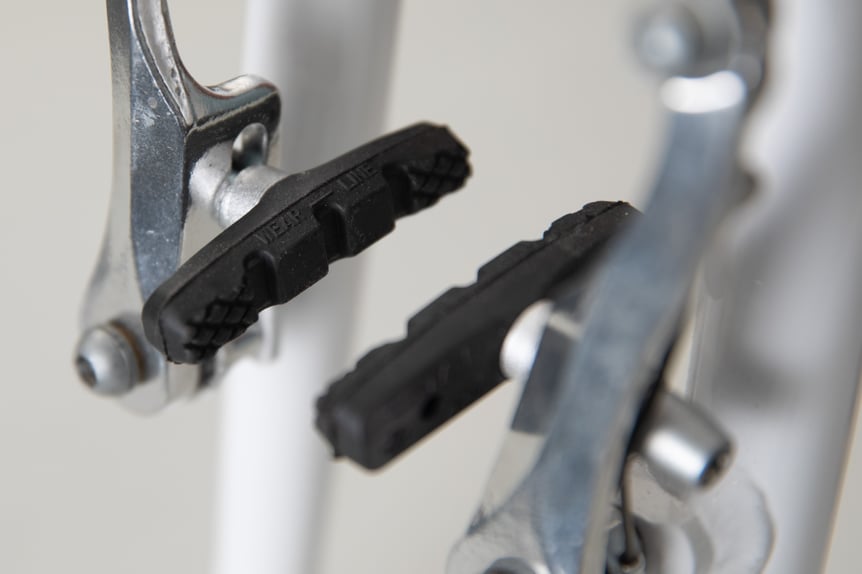
Not satisfied that the brakes are working to absolute perfection? Then do not allow your child to ride the bike at all. In fact, we suggest you take it to a bicycle workshop to get it checked over.
Of course, you can always fix any minor niggles yourself if you have the right tools and some experience. For instance, if the grooves on the brake pads are worn down, it's time to get those pads replaced with new ones. Sometimes, the brake cables may also begin to corrode. You can try to relieve this by spraying some Teflon-based lube (you'll find this in all DIY shops) into the cable housing. This will enable the cables to glide through the housing once again.

Last but not least, check the hexagon socket bolt on the brake arms and tighten it as required. If the brake pads are slightly worn, you can turn the adjustment bolt on the brake lever to bring them closer to the rim, thereby ensuring that your child will be getting maximum braking power.
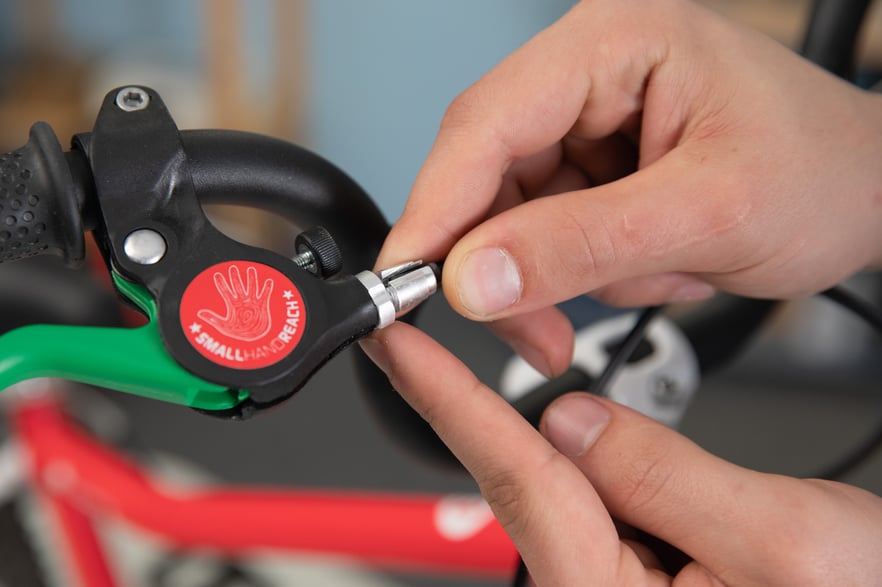
Step 5: Pump up the tyres!
The next logical step has to be checking the tyre pressure at the front and back. To do this, simply press your hand hard against the tyres. You should feel noticeable resistance from the tyres, which you can expect to be firm. If they have lost air over the winter, it does not necessarily mean that you have a puncture or that the valve is broken. The recommended air pressure is written on the sidewall of the tyre. If you have a track pump with a gauge, you’ll be able to pump it up precisely. Otherwise, the general rule is that the tyre pressure needs to be high to lower the rolling resistance, making riding on tarmac surfaces a dream. For riding off-road, though, the tyre pressure should be lower – ideally just a fraction over the suggested minimum pressure to give your child better suspension through the tyres.
Don't forget to keep checking the tyre pressure regularly (at least once a month) during the peak cycling season.
Gearing
If your child's woom bike has gearing, you'll need to check this over every so often too. The chain might be rubbing, skipping, or shifting irregularly.
Keep reading to find out exactly how to adjust the gearing properly. You will need to have a good understanding of how bikes work if you want to have a go yourself. If you don’t adjust your own bike or your kids’ bikes on a regular basis, we would recommend contacting a specialist workshop so that a professional can take care of any necessary gearing adjustments for you.
There are only three bolts standing between you and a perfectly adjusted derailleur. Start by checking the derailleur limits:
- Change to the smallest sprocket to check the lower limit. The jockey wheel should be lined up underneath the smallest sprocket at this point. If not, you'll need to turn the "H" bolt.
- When it's time to adjust the upper limit, change to the largest sprocket. If the jockey wheel is not positioned exactly beneath the largest sprocket, you'll need to turn the "L" bolt.
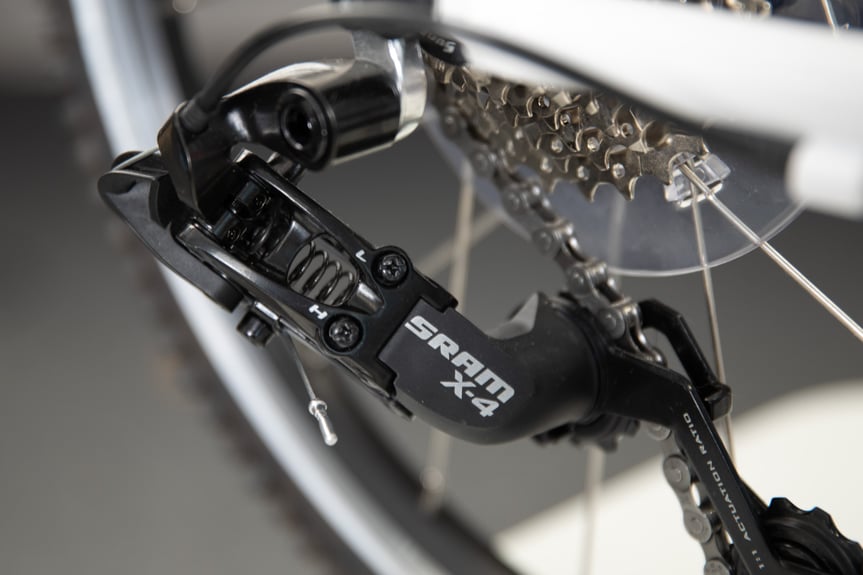
But in which direction? When you turn the H bolt in a clockwise direction, the jockey wheel moves to the left and towards the wheel. And when you turn the H bolt in an anti-clockwise direction, the jockey wheel moves to the right and away from the wheel. It’s the other way around for the L bolt.
Using the barrel adjuster on the trigger shifter – located where the cable enters the gear shifter on the handlebars – you can adjust the tension of the gear cable.
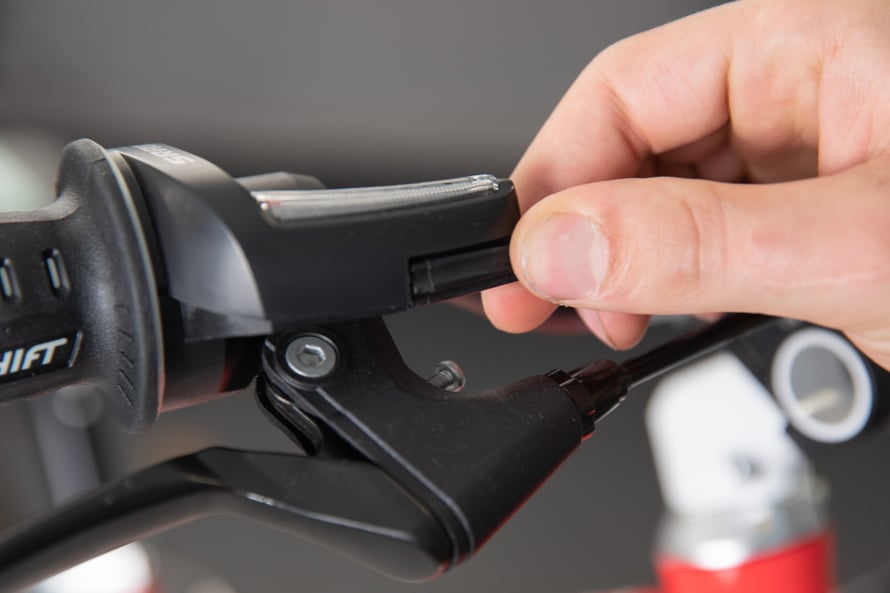
- If the chain does not move to the next-largest sprocket when you change gears, you'll need to increase the tension by turning the adjuster in an anti-clockwise direction.
- If, however, the chain skips several sprockets, you'll need to turn the adjuster in a clockwise direction to reduce the tension.
Our top tip is to turn the bolts a little at a time to give you maximum control over the adjustment process.
Now your child's bike is ready to ride!
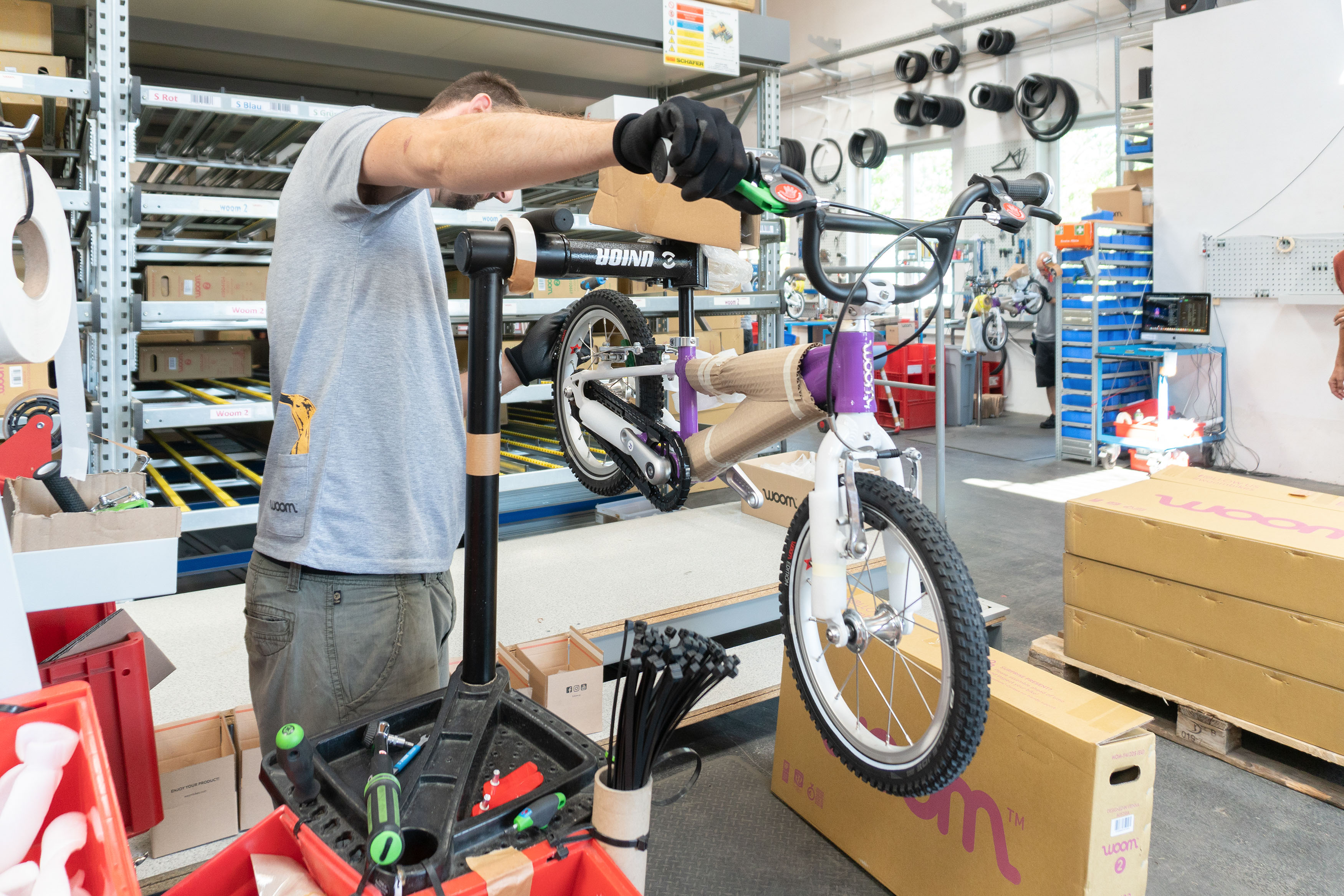

.jpg?width=926&upsize=true&name=woom_still_and_moving_in_action_2018_345-Edit-720x480-32ef3212-c95f-4d63-b83a-d57bf7c038f6%20(1).jpg)
